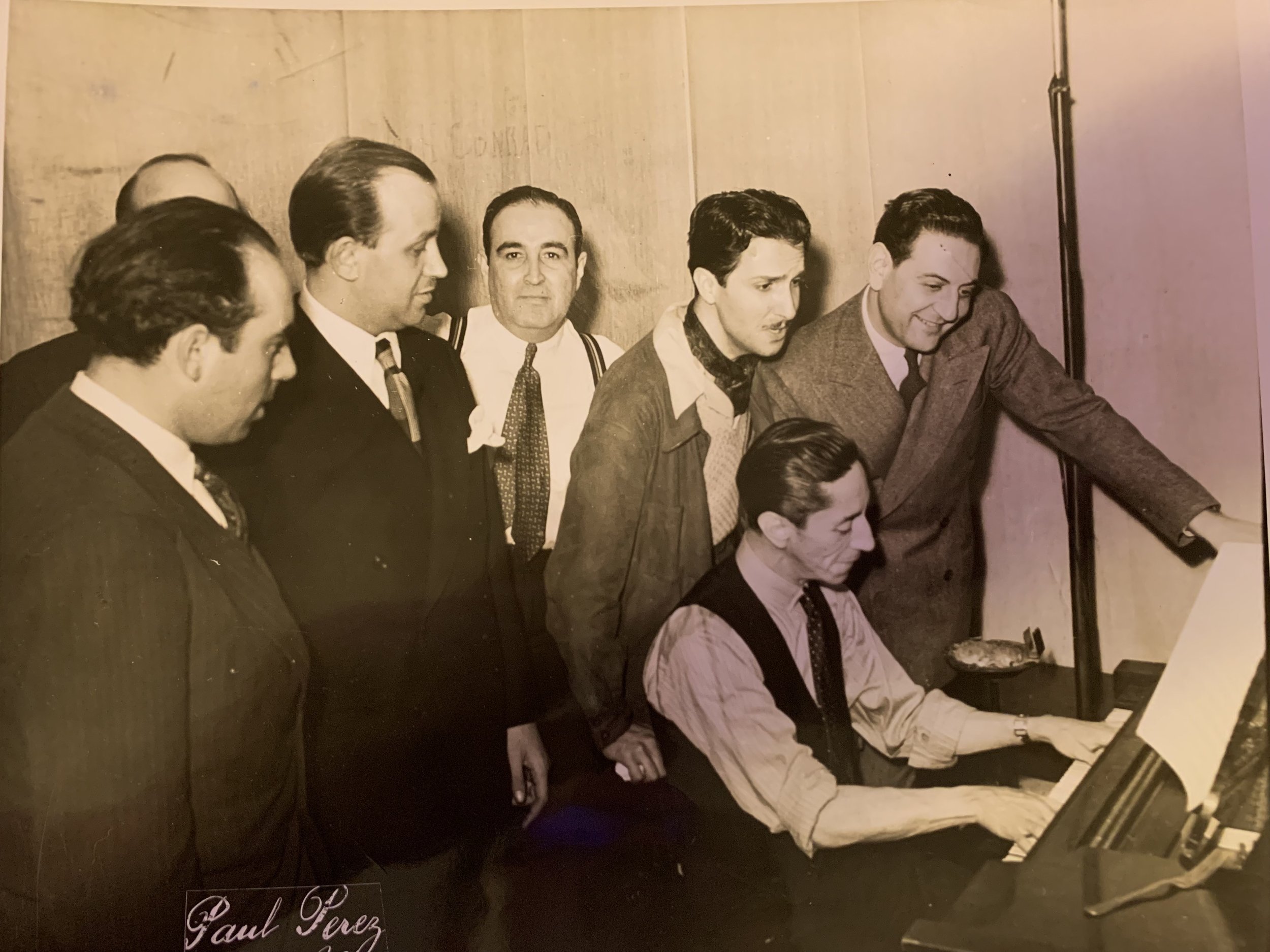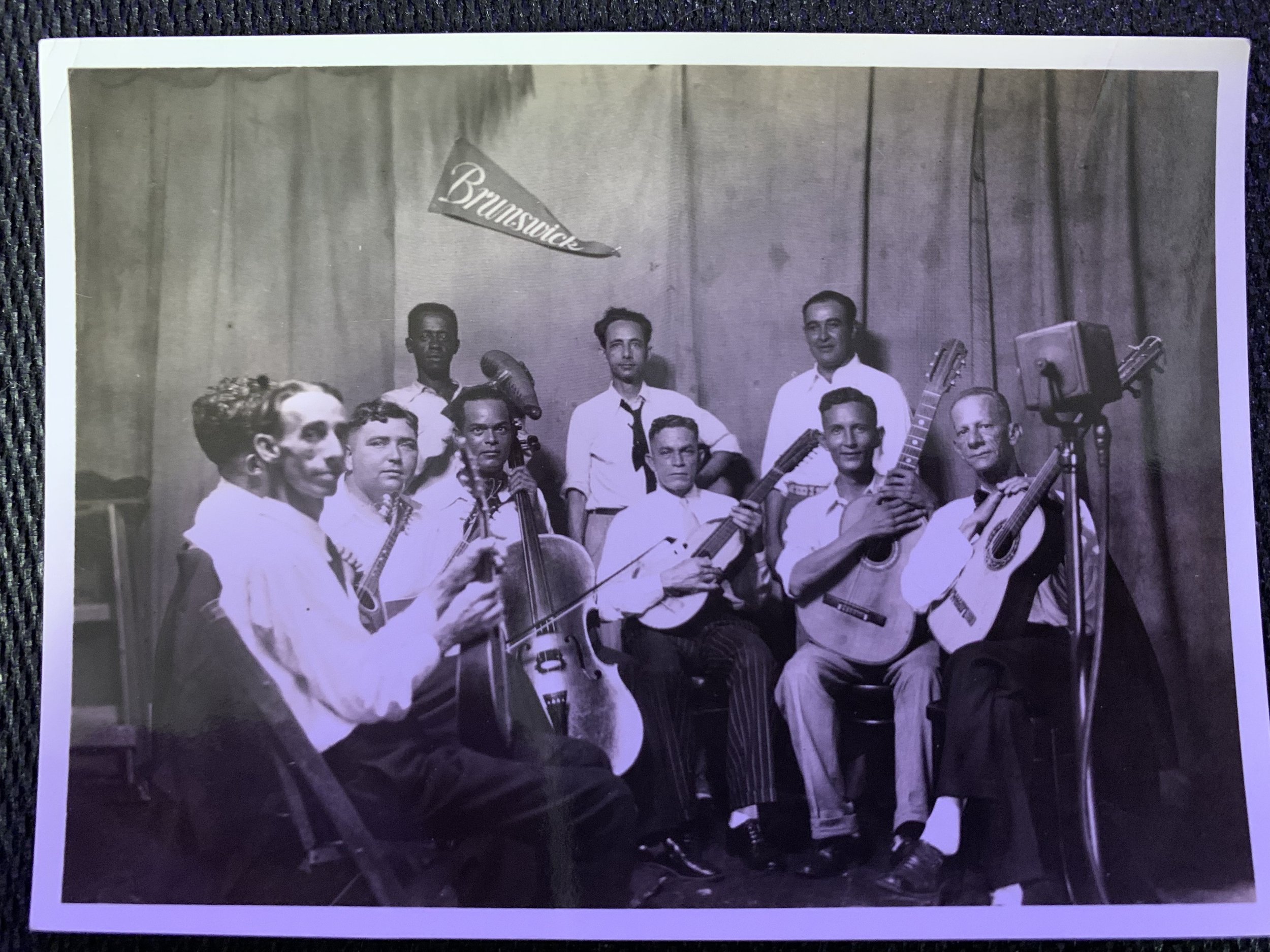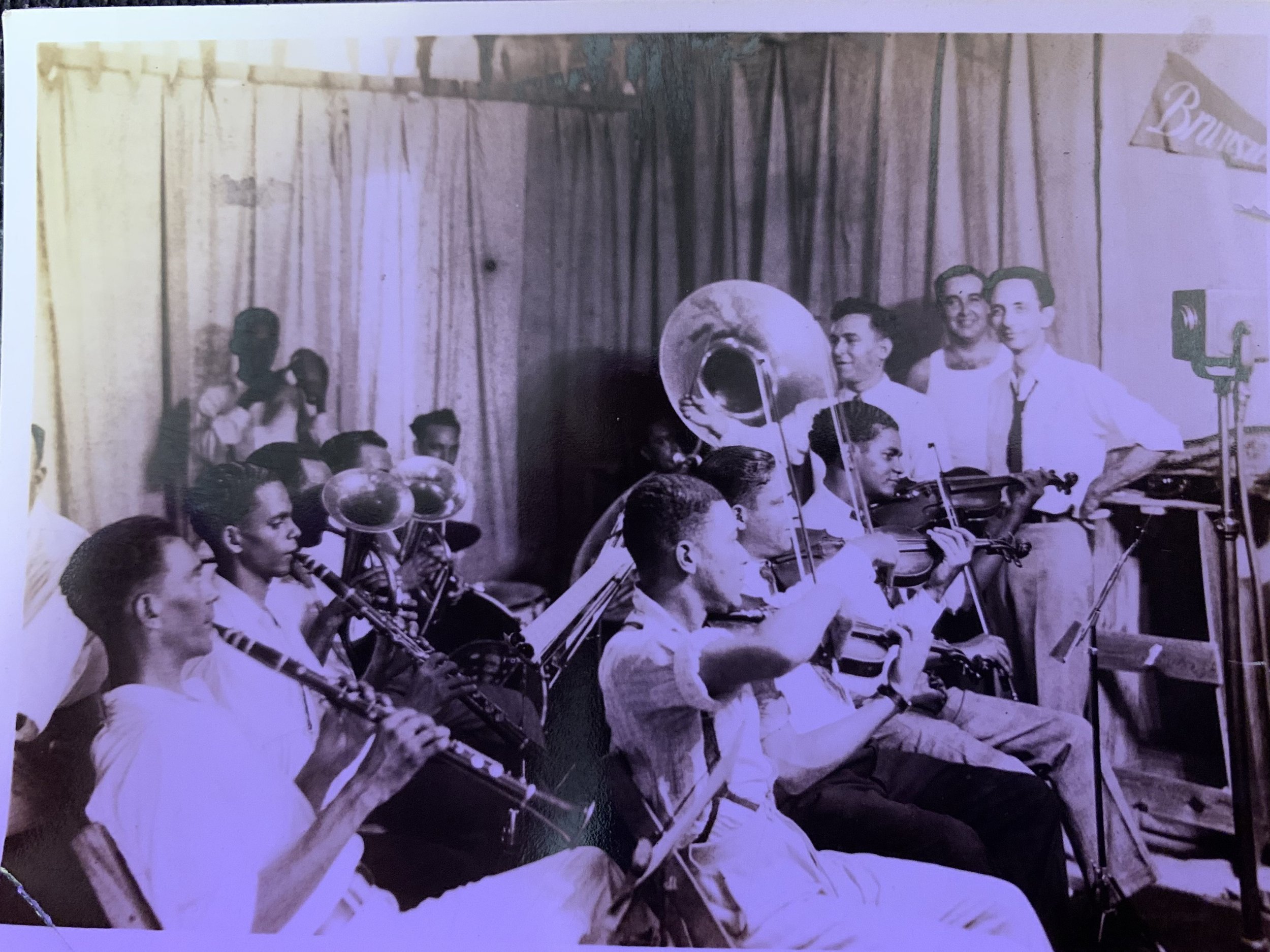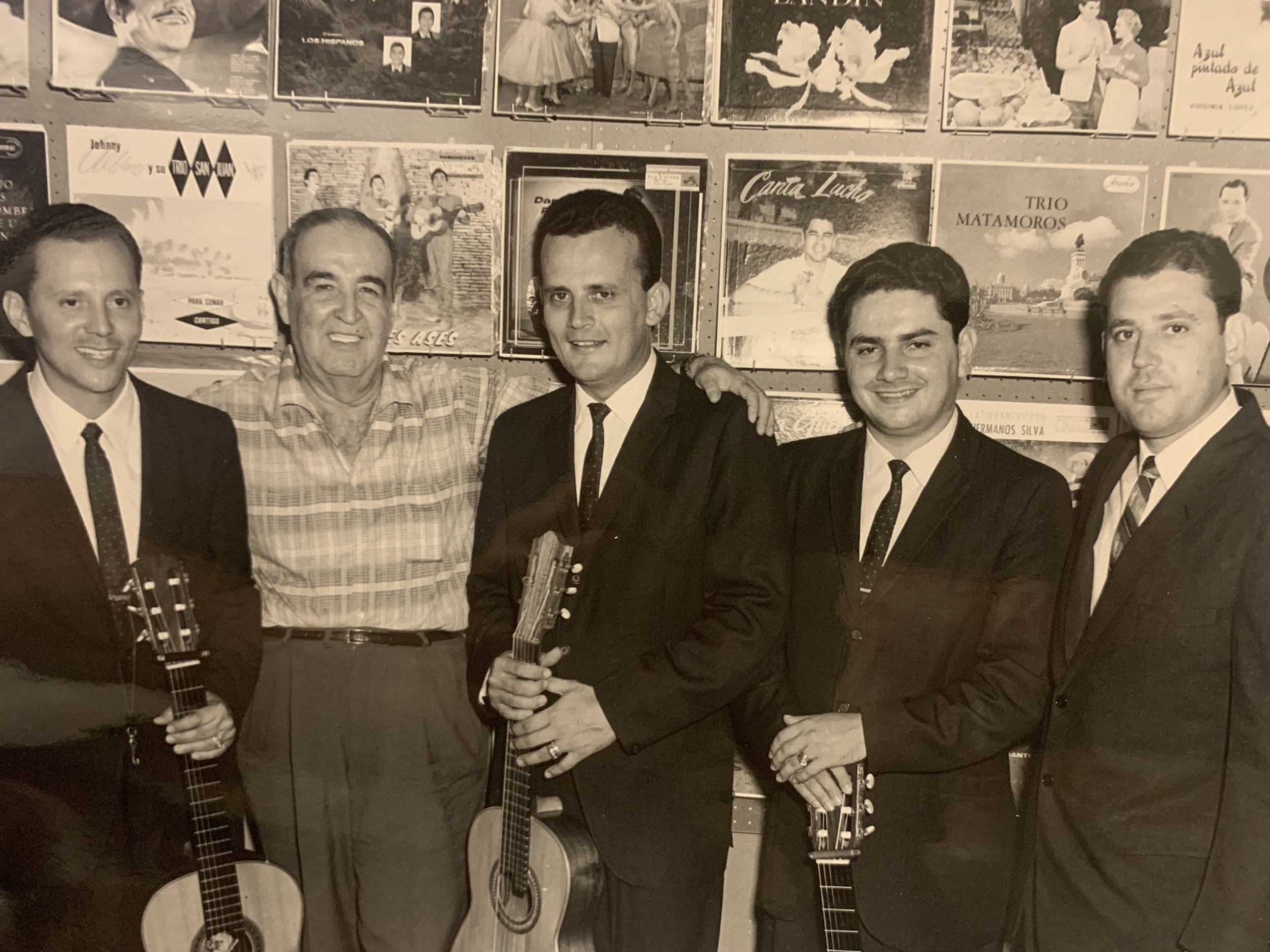The Latin Music Legacy of Ralph Pérez and Ansonia Records
Editor’s Note: The following essay belongs to a series exploring the history of Ansonia Records, an independent, family-run music label which was founded in New York City in 1949. The Ansonia catalogue, recently digitized, boasts an impressive and influential collection of Puerto Rican jibaro music, Dominican merengue, and other folk and popular music genres from throughout Latin America. Further research will no doubt uncover the role Pérez and the Ansonia label played in the development of Latin music within the recording industry. See below for the full series:
¿Conoces este disco de papi con Johnny Rodríguez y su trío?: Ansonia Records and Puerto Rico [Part I] by Dr. Mario Cancel-Bigay
¿Conoces este disco de papi con Johnny Rodríguez y su trío?: Ansonia Records and Puerto Rico [Part II] by Dr. Mario Cancel-Bigay
Ansonia Records and Dominican Merengue’s Place in Latin Music History by Jhensen Ortiz
Special thanks to Jhensen Ortiz, Mario Cancel-Bigay, Ewin Martinez Torres, Henry Gerard Glass, Liza Richardson, and Souraya Al-Alaoui.
Rafael “Ralph” Francisco Pérez Dávila was a pioneering figure in the American recording industry, first as an A&R representative, traveling extensively throughout the Americas, and later, as the owner of his very own independent, family-run music label, Ansonia Records, which provided an enduring soundtrack for the Latin community in New York City from the 1950s onwards. With Ansonia Records, Perez captured the sounds of the Caribbean, Spain, South America, and beyond; boasting a catalogue of legendary musicians such as Arsenio Rodriguez, Rafael Cortijo, Angel Viloria, Noro Morales, Myrta Silva, Mon Rivera, El Trío Vegabajeño, and Ramito, among many others. What follows is a modest biographical sketch exploring Pérez’s little known, yet far reaching legacy.
Early Years
Pérez was born on January 29, 1899, in the coffee growing region of Yauco, Puerto Rico.¹ Growing up during the transition from Spanish to American colonial rule, Pérez initially studied to become a teacher, but ultimately decided to seek opportunity in the United States. On June 9, 1920, a 21-year-old Pérez boarded the S.S. Coamo for the seven-day journey to New York City, where a modest, but growing Puerto Rican community had settled during the postwar period—a migratory process facilitated by the 1917 Jones-Shafroth Act, which imposed statutory citizenship on Puerto Ricans. Pérez soon began a career in the recording industry working with Edison Records and Columbia Records, before briefly moving to Chicago to work for the Brunswick Company.
Around this time, Pérez would also meet his future wife, Perla Violeta Amado, a Guatemalan-born soprano who would achieve international fame as a dancer, singer, and recording artist. In addition to touring Europe and the Americas, Amado released music for major labels such as Decca, Columbia, and Brunswick, appearing alongside leading contemporary Latin American artists such Jorge Escudero, Margarito Cueto, Enric Madriguera,² and Lorenzo Herrera. Amado would later re-record some of her earlier releases for Ansonia Records, and contributed liner notes for albums released by the label.
The couple returned to New York City and married in 1933. By then, Pérez was making recording trips for Brunswick to San Antonio, Texas, where “a huge push to record Mexican music was underway” (Huber & Ward, 2018: 73).³ A studio was set up in the famous Gunter Hotel, which is listed on the National Register of Historic Places. Legendary blues artist Robert Johnson recorded one of his two historic sessions at this location in 1936. Perez is credited in The San Antonio Light as “the gentleman largely responsible for the current American rage for languid Mexican songs and exotic Cuban rumbas…” (Huber & Ward, 2018: 43).
Upon joining the newly created American Division of UK-based Decca Records, Pérez traveled extensively to build the label’s Latin music catalogue and is even credited for developing the Latin repertoire of Bing Crosby, a.k.a. “El Bingo.”⁴ Ultimately, he became the head of the Latin division and an early advocate for the folk and popular music of the region. In 1934, Pérez and Amado’s only daughter, Mercedes “Tati'' Pérez Amado was born, receiving mention in a newspaper clipping from La Prensa under the headline “Perla Violeta Amado tiene una niñita.” It was common for Amado to appear in local coverage highlighting her travels and performances. As president of the Celebratory Committee for the Porto Rican Brotherhood, which formed in the early 1920s, Pérez may have also enjoyed a modest profile as a civic leader. Puerto Rican social and political clubs were common during this period as a resource for the nascent Puerto Rican community, which required support in the face virulent discrimination and bureaucratic neglect. Civic duty appears to be a lifelong commitment of Pérez, as he appears in a 1957 photo along with community leaders in Miami, where the caption alludes to a discussion on the needs of the local Puerto Rican community. A 1967 newspaper advertisement for PanAm also suggests that Pérez, who claims to travel to the island “15 to 20 times a year,” maintained a strong connection to Puerto Rico via la Guagua Aérea.





Trinidadian Calypso
Before launching Ansonia Records, one of Pérez’s most celebrated endeavors was a series of annual recording trips to Trinidad which took place between 1938-1940.
In 1934, Eduardo de Sá Gomes, a Portuguese businessman who had relocated to Trinidad, sent two leading Trinidadian calypsonians to New York City to record for ARC (American Record Corporation). The success of these recordings led Jack Kapp, who left ARC in the summer of that same year, to strike a deal with Sá Gomes to continue releasing calypso recordings under the newly formed American division of Decca Records. Between 1935 to 1937, Trinidadian calypsonians traveled to New York City to record, in the process gaining notoriety via nightclub performances and radio airplay. The growing popularity of calypso led the RCA Victor label to record calypsonians in Trinidad in 1937. In response, Pérez decided to set up a Decca recording studio in Port-of-Spain at 58 Frederick Street, in partnership with Sá Gomes. The studio was advertised in the Port-of-Spain Gazette as the most modern in the country and illustrates the rivalry that had developed between Decca and RCA Victor. Last minute preparations allowed for Pérez and his recording engineer, Monroe Wayne, to also incorporate Guyanese, Grenandian, and Venezuelan musicians into the 1938 recording sessions. Pérez and Wayne arrived via steamship in early February, just before the famously intense musical competitions that take place during carnival season in Trinidad. Pérez was given full authority to record the best local musicians, which extended beyond the Calypso genre and included spirituals, African war songs, and Venezuelan joropo, among other genres. To be able to release recordings in Trinidad, one of the main target markets for Decca’s calypso series, song lyrics had to be submitted by Pérez to the Colonial Secretary for approval. Dick Spottswood writes that British colonial censors “wanted to control the political element of topical calypsos, supposedly as a means of maintaining law and order.” Musicians, in turn, were supposedly paid $10 per song (approximately $200 present-day), plus royalties. Pérez and Wayne would return to Trinidad for carnival season the following year, this time setting up a studio at 44 Marine Square. It appears that Pérez did not return for the third trip in 1940, which took place in the same location, but was marred by poor recording quality likely due to technical problems.
Pérez did, however, put his knowledge of Trinidadian music and culture to use as a prominent source for Joseph Mitchell’s article “Houdini’s Picnic,” which was published in the New Yorker in the spring of 1939. The famed American journalist profiles New York City-based calypsonian Wilmoth Houdini while attending a West Indian community gathering on Lenox Avenue and 116th St. in Harlem. Pérez is introduced as a “Puerto Rican of Spanish descent” and guides Mitchell through the evening’s festivities. From describing the origins of Calypso to quoting lyrics from the many songs he is tasked with identifying, Pérez is an essential character in the story without whom Mitchell would not be able to provide the rich layer of detail signature to his reporting.
The outbreak of World War II would upend the arrangement between Decca Records and Sá Gomes. Decca Records and the recording industry as a whole would also deal with a shortage in the material used to manufacture records. Available shellac, in turn, was prioritized for American recordings. Sá Gomes did send musicians to New York City again in 1941. The following year, however, outdoor carnival was banned for the remainder of the war and Decca instead began to release older recordings. During this period, Decca would release its first international Calypso hit, “Rum and Coca Cola,” composed by Lionel Belasco with lyrics by Lord Invader—a harbinger of the North American calypso crazy of the next decade.
In 1949, Perez was quoted in Billboard Magazine in an article which stated that Decca Records would be investing in new Latin music recordings following a precipitous drop in sales for the Latin division. However, the article also mentions that Latin artists would not be signed to exclusive contracts and that the A&R policy moving forward would be vaguely ad-hoc, meaning recording sessions would take place when “the right tunes and artists become available.” Coinciding with the death of Decca Records co-founder Jack Kapp a few months prior, perhaps this was the “writing on the wall” which Pérez’s daughter Mercedes references as an impetus for her father to realize his dream of creating his own music label.
The Birth of Ansonia Records
Ansonia Records, however, did not begin as Ansonia Records. Its precursor was a short-lived label called Ideal Record Sales, named for a theater in Pérez’s hometown of Yauco and located at 1485 Madison Avenue.⁵ The company was a partnership with Steven (Esteban) Rodriguez and released 78s of artists such as Orquesta Tropical, Conjunto Ideal, Cuarteto Becker, and so on. By June of 1949, Pérez bought Rodriguez’s share of the company and became the sole owner. Ansonia Records was born during a time when the Latin music industry was thriving in El Barrio, where the proliferation of record stores and music labels reflected the musical tastes of the growing Puerto Rican colonia and Hispanic community at-large. Ansonia Records is described as “the last major record company to emerge in El Barrio” (Martínez Torre, 2002: 47). Pérez named his company after a luxurious residential hotel on the Upper West Side of Manhattan where Ansonia housed visiting recording artists and where Perez attended meetings as president of the local Exporters Club. In early January of 1950, it was reported that Pérez had resigned from his position as head of Latin American sales and repertoire at Decca Records in order to focus on Ansonia Records full-time, which is exactly what he did, utilizing his industry knowledge to build an extensive Latin music catalogue and record musicians in studios in New York City, Cuba, Puerto Rico, and Mexico. Ewin Martínez Torre writes that Pérez supervised every recording session and ensured that musicians were well rehearsed before entering the studio. To this end, it is worth noting that Ansonia did not provide artist management or produce live shows, relying more so on radio airplay to disseminate their recordings. In the mid-1950s, Ansonia Records moved to a new location on the Upper West Side of Manhattan, at 992 Columbus Avenue. According to Martínez Torres, Perez also launched a second label around this time called Superior Records, which sold 78s and 45s.
Later Years
Ansonia Records was truly a family-run company, with Perez working alongside his daughter Tati and her husband. Like her father, Tati had studied to become a teacher before entering the music business. Her husband, Herman Glass, shared a similar background; his family owned Square Records in Lower Manhattan. Perez mentored both, with Glass eventually taking over A&R duties and Tati overseeing the business side.
Mr. Pérez died in Fort Lee, New Jersey on October 19, 1969 after suffering a heart attack. Ansonia Records would continue operating, eventually moving to New Jersey, where the family had relocated decades earlier. In 1985, Ansonia moved to 750 Patterson Avenue, East Patterson, New Jersey, then again to 380 Kamena St, Fairview, New Jersey. In 1986, Herman Glass passed away, leaving his wife and their son Henry Gerard to manage the company. In 1990, a special proclamation was issued by New York City mayor Ed Koch to commemorate the 40th anniversary of Ansonia Records. By that time, there were no new Ansonia recordings released, though some of the catalogue was reissued on compact disc. Mercedes passed away in 2015 and the company was sold in 2019. Since then, Ansonia’s vast catalogue of LPs has become available online, ending a conspicuous absence from digital distribution and online streaming services. More research remains to be done on this emerging collection, which includes a sizable amount of Haitian music, in addition to artists from Peru, Panama, and other Latin American countries. Overall, it is a veritable treasure trove into the past, a legacy sustained by the hi-fidelity of the music and the trailblazing vision of Ralph Perez.
For new releases and the Ansonia catalogue, visit https://www.ansoniarecords.com/
Footnotes
Both a WWII registration card and a petition for citizenship form for his wife list Mr. Perez’s date of birth as January 29, 1899. Other sources list the year 1900.
Though born in Spain, Madriguera’s repertoire as a recording artist was dedicated largely to Latin American music.
Pérez is erroneously referred to as Ralph Gómez Pérez, though the year and place of his birth, as well as employer are correct.
A collection of Bing Crosby’s recordings of Latin American songs was released by Decca Records as El Bingo - A Collection Of Latin American Favorites. The only apparent difference between Bing Crosby and El Bingo appears to be the sombrero he is wearing on the album cover.
Curiously enough, another independent record company called Ideal Records was formed in 1946 to address the lack of recordings by Mexican-American artists in Texas. For more, see Francisco Orozco’s dissertation, “Chololoche Grooves: Crossroads and Mestizaje in Chicano Soul of San Antonio.”
Bibliography
“Decca Reactivates Latin America Department.” The Billboard, 17 Sept. 1949, p. 14.
Eldridge, Michael. “There Goes the Transnational Neighborhood: Calypso Buys a Bungalow.” Callaloo, vol. 25, no. 2, 2002, pp. 620–638.
Korrol Virginia Sánchez. From Colonia to Community the History of Puerto Ricans in New York City. University of California Press, 1994.
Martínez Torre, Ewin. “Popular Music and Cultural Identity: Record Producers in the Puerto Rican Community of East Harlem / El Barrio from 1927 to 1950.” City College of the City University of New York, 2002. Pp. 32-49.
Miami Daily News, 24 Apr. 1957, p. 2A.
Mitchell, Joseph. “Houdini's Picnic.” Up in the Old Hotel, Vintage Books, London, 2012, pp. 269–282.
Ortíz Ramos, Pablo Marcial. A tres voces y guitarras: los tríos en Puerto Rico (San Juan: Editora Corripio, 1999) 139.
Ramnarine, Tina K. “Music in the Diasporic Imagination and the Performance of Cultural (Dis)Placement in Trinidad.” Island Musics, edited by Kevin Dawe, Berg, Oxford, 2004, pp. 135–138.
Ritmo y Aché. WBAI 99.5FM. Broadcast date unknown. New York, NY.
Stuempfle, Stephen. Ethnomusicology, vol. 51, no. 3, University of Illinois Press, 2007, pp. 519–26, http://www.jstor.org/stable/20174555.
Ward, Brian, and Patrick Huber. A&R Pioneers: Architects of American Roots Music on Record, Vanderbilt University Press, Nashville, 2018.
West Indian Rhythm Trinidad Calypsos on World and Local Events – Featuring the Censored Recordings 1938-1940. Bear Family Records, 2006.
Néstor David Pastor is a writer, editor, and translator from Queens, NY. He is the founding editor of Intervenxions, a Latinx arts and culture publication of the Latinx Project at NYU, and Huellas, a bilingual magazine featuring long-form writing by emerging Latin American and Latine writers. His past editorial work includes the award-winning NACLA Report on the Americas, a print magazine by the North American Congress on Latin America (NACLA), and CENTRO Voices, a digital publication of the Center for Puerto Rican Studies at Hunter College. He is the editor of Latinx Politics–Resistance, Disruption, and Power (2020), Intervenxions Vol. 1 (2022) and Intervenxions Vol. 2 (2023). In 2022, he was the recipient of the Queens Arts Fund ‘New Work’ grant. Most recently, he was selected to participate in the 2023 NALAC Leadership Institute. An essay on Cayman Gallery and the Museum of Contemporary Hispanic Art is forthcoming in Nuyorican Art: A Critical Anthology (Duke University Press, 2024). To see his full portfolio and current projects, visit: www.ndpastor.com







